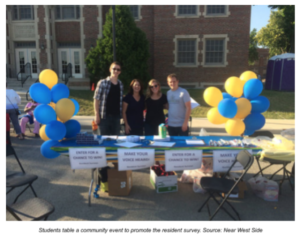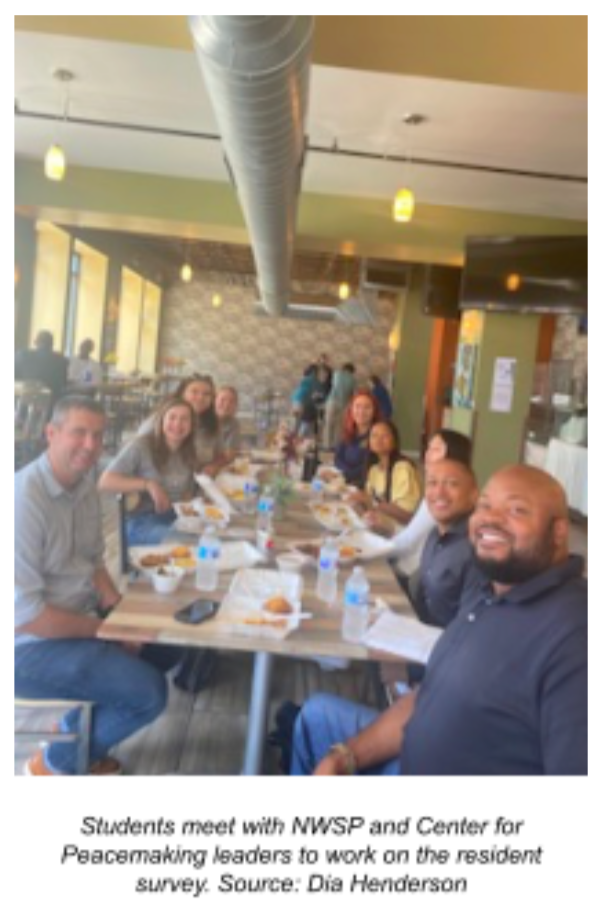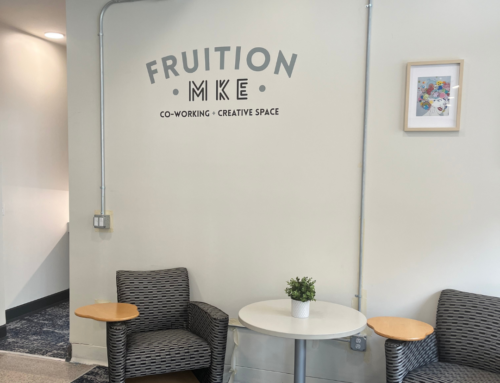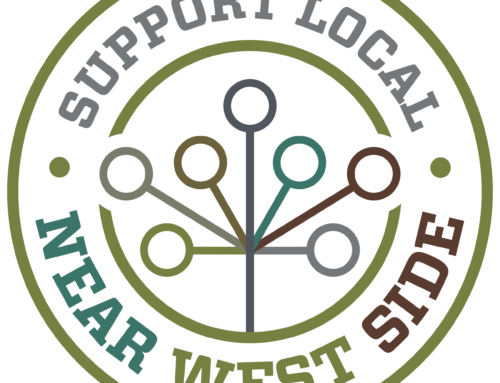The annual resident survey has launched for a sixth year for residents to report their quality of life and important issues in the Near West Side. It seeks to help local groups such as Marquette University’s Center for Peacemaking, the Democracy Lab (MDL), and Near West Side Partners (NWSP) better understand how to create a safer, more vibrant community. The feedback offers a chance for leaders to measure improvements made and discover where there’s room for growth.
The benefits of the survey are seen across the neighborhood. Students at Marquette can use it as an opportunity to conduct research, analyze data, and gain hands-on experience.
“The team is interactive with residents,” said Dia Henderson, graduate research assistant at the Center for Peacemaking. “By having these personal talks, we’re able to get real feedback from real people.”
The survey seeks to answer questions that revolve around important local issues and how residents perceive their neighborhood. Each section is divided into four main categories: Housing, safety, health, and business development. Dr. Abiola Keller, MPH, PA-C and chair of the Healthy Working Community Team, is working “to better understand resident stakeholders’ perceptions of the unmet health and healthcare needs of the Near West Side.” The team then uses the survey responses to guide their priorities.
“[The first step] is almost like crowdsourcing,” Dr. Wichowsky said in describing how surveys are done. “Then, we identify the top ideas that emerged in the process, and residents rank them to figure out what their priorities are.”
Since COVID, the survey has also been made available online. Some questions offer the ability to write in responses, while others include a range of feelings between “Strongly Agree” and “Strongly Disagree” to better capture feelings about a particular issue. It takes about ten minutes to complete.
“Open-ended questions can be really informative when people speak in their own words,” Dr. Wichowsky said. “People love having the space to write or talk on this survey.”
Data can be used to tell the Center for Peacemaking and NWSP what’s lacking in their work. For example, the need for fresh food was something lots of residents talked about in their surveys, so NWSP opened the Near West Side Farmer’s Market (now the Vilet St. Oasis).
“One of the key outcomes related to health and well-being has been the formation of a working team specifically focused on developing strategies to assess and improve determinants of health in the Near West Side,” Dr. Keller said. Information from this year’s survey will allow the team to reasses how to improve health outcomes in the Near West Side.
Above all else, residents can interact more with those working in the community and learn about how local leaders are working to make the neighborhood better to live in.
“The resident survey is an opportunity for residents to share their experiences and insights,” Dr. Keller noted.
“By listening to residents, we’re putting an effort into making a change in the community,” Henderson said.
NWSP recognizes that community initiatives are driven by residents and that the survey can be used as a tool to amplify the voices of those that might feel unheard. The chance to have a one-on-one conversation with a NWSP representative helps residents match neighborhood programs to the people doing them.
“It’s not just going to survey residents. You get a chance to form a real bond when you’re able to sit down and talk with a member of the community,” Henderson said.
Information provided helps leaders “think about connections within the community and other development ideas that would create a broader vision for the Near West Side,” Dr. Wichowsky said.

The resident survey is promoted throughout the summer on social media, in online newsletters, and by posting door hangers at residencies. Over 70 surveys have already been completed, with the goal of 400 by the end of the summer.
You can use this link to access it online; residents will be contacted throughout the summer as well. Results from this year’s survey will be published in the fall. If you have any other ideas that you would like to share with NWSP about how to improve the neighborhood, join us at one of our community events or contact us online.





